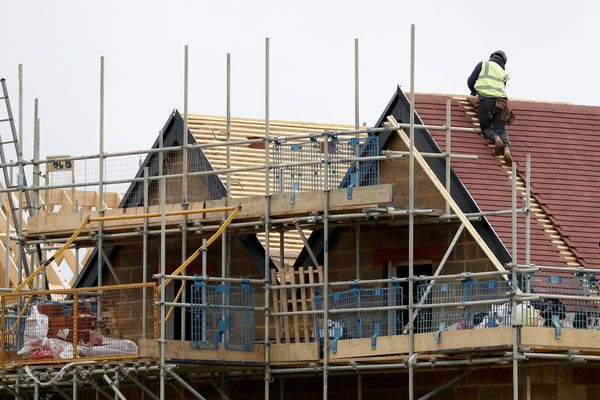
Cold-calling voters is one way to get a message across, but if the Voice referendum Yes and No campaigns really want to get their message across, knocking on doors is much more effective, seasoned campaigners have told Crikey.
The No camp recently faced criticism after The Sydney Morning Herald and The Age revealed volunteers had been “instructed to use fear and doubt rather than facts” when calling voters. A senior campaigning official in a leading No activist group had told volunteers, according to the story, “not to identify themselves upfront as No campaigners as they make hundreds of thousands of calls to persuadable voters, but instead to raise reports of financial compensation to Indigenous Australians if the Voice referendum were to succeed”.
Another story in the same newspapers said trade union campaigners supporting the Yes vote were told to “tell Australians the No side is vilifying Aboriginal people in the Voice to Parliament referendum campaign”.
According to Climate 200 executive director Byron Fay, hitting the phones tended to be far less effective than face-to-face meetings with voters.
“We know that conversations are the most effective persuasion technique,” he told Crikey. “The No camp is focusing on phone calls because they allow you to leverage your volunteers into target geographies, regardless of where those volunteers are located. They don’t have many volunteers, so it makes sense.
“But face-to-face conversations are even better. This is where the Yes campaign’s big volunteer numbers can be a real advantage, but they need to be mobilised to speak to undecided voters. Volunteer-led door-knocking is the best way to do that.”
Door-knocking efforts were “infinitely scalable and low-cost”.
Ed Coper, executive director at the non-profit Center for Impact Communications, agreed phone banking tended to have a very limited impact, but he was less convinced door-knocking was much more effective.
“Studies looking at door-knocking and phone banking have found nothing really had any effect, or at least it was negligible,” he said. “The big caveat is that there are forms of voter contacts and phone banking that can be really effective. Obviously, if you’re getting a phone call from someone that you know, it’s much more persuasive than if you’re getting one from someone you don’t know.
“Likewise, if you door-knock in a traditional way and say ‘I’m campaigning for this side, please vote for us’, it’s way less effective than if you have an open and two-way conversation with someone and listen to their views before you share yours. That’s actually really effective.”
He said any campaign with lots of passionate and knowledgeable volunteers will have a greater chance of cutting through: “There will be a section of the voting public that are completely unengaged with the issue, and they might learn about it for the first time through one of these pieces of voter contact. That’s really important, because generally the way our brains work, the first thing we hear when we haven’t made up our mind on an issue is going to be really persuasive.
“And once people make up their mind, it’s really hard to change.”
Both men agreed campaign events — such as the multiple big Yes23 rallies at the weekend — were important for motivating volunteers. “But it’s what those volunteers do after those events that really counts,” Fay said.
Fay said Climate 200 was working to support the Yes side by establishing a “community Voice fund” that had raised $430,000: “As a proud descendant of the Dharug nation, I feel really proud of the impactful contribution we are making to the Yes campaign thanks to the support of our generous donors.”
Coper, too, said he’d done work for the Yes side, “advising them around misinformation”.
The No campaign has so far been more successful at persuading voters, according to polls. A Guardian Essential poll released overnight showed “No voters in the majority (51%) for the first time … with 41% intending to vote Yes and 9% on the fence”.
A series of articles in The Conversation has shown the No side has been more successful in getting its message across various news and social media channels in recent weeks.
The top five news items that had the most interactions on X (formerly known as Twitter) and Facebook in the three months to August included a Sky News Australia story accusing a fact-checking service of “censoring the Voice”, a story about Pauline Hanson commenting on a Sky News story critical of the Voice, and two stories about Coalition MPs voicing concerns about the Voice and voting procedures.
“These snapshots are concerning because some stories contain misleading information … but they also show the power of negative stories to attract attention, and the reach of Rupert Murdoch’s Sky News TV stories beyond its paywall,” The Conversation reported.
Last week, the network reported the No side had so far had better success at gaining traction on TikTok.







